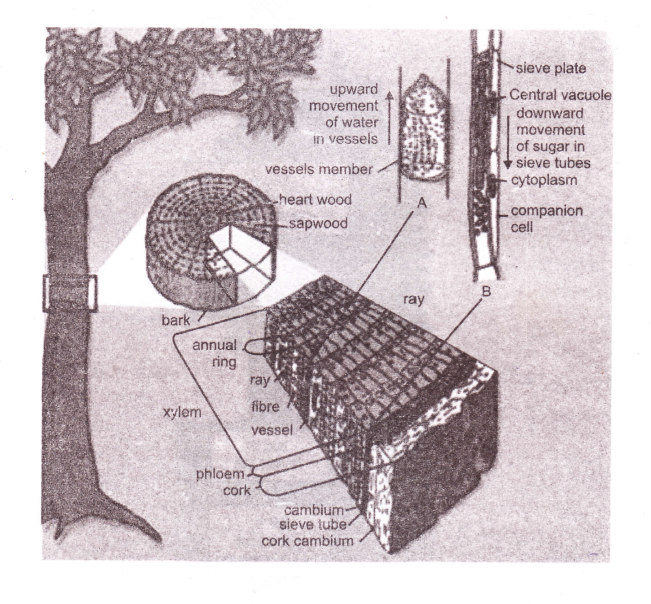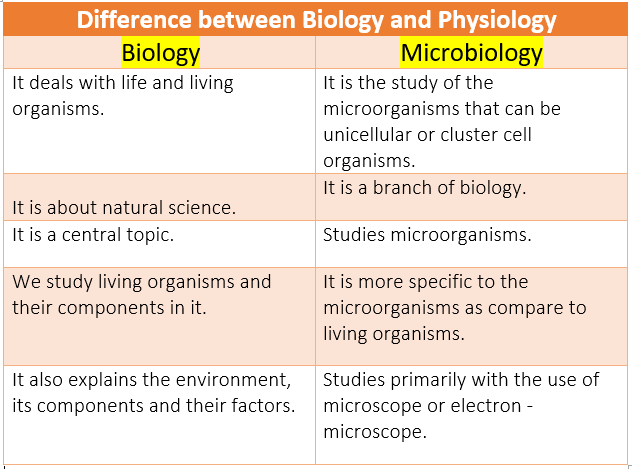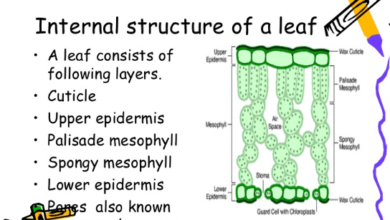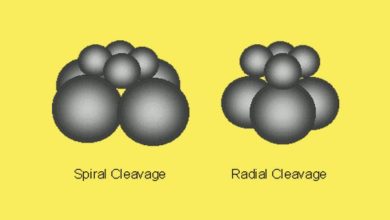The known tallest tree of the world is a Sequoia sempervirens (California redwood). The height is estimated to be 111.6 m (366.2 ft). Similarly, the tallest living broad-leaved tree s an E. regnans measured to be 99.2 m. One of the earliest studies dealing with plant physiology includes how water is raised in tall trees and what is the mechanism of movement of water from roots to uppermost leaves in tall trees. These plants transport water through their stem must be incredible.
Ascent of Sap
The upward movement of water and minerals dissolved in it from the roots to the top of the plants was termed as the ascent of sap.
Pathway of Translocation of Water
The translocation of water through the length of a plant takes place primarily in the xylem portion of the vascular tissue system. The xylems constitute the longest part of the pathway of water transport. In a plant, 1 meter tall, more than 99.5% of the water is transported through the xylem. Conducting cells in xylem, tracheids, and vessels, have specialized anatomy that enables them to transport large quantities of water with great efficiency.
Xylem Sap — Fluid in Xylem
The fluid translocated in the xylem is a dilute (about 0.1%) solution of mineral ions absorbed from the soil. These dissolved mineral ions are carried passively in the water in the transpiration stream and when these reach a leaf, they are absorbed by leaf cells by active transport mechanisms.
In addition to mineral ions, a small number of organic substances such as amino acids, amides, sugars, cytokinins, abscisic acid, etc. are also present. This water solution translocated in the xylem is referred to as xylem sap.
THEORIES EXPLAINING ASCENT OF SAP
Various theories based upon biological and physical phenomena were suggested to explain the mechanism of rapid translocation of water from roots to the uppermost leaves.
These are:
i. Role of Living Cells
Many physiologists suggested that living cells of the stem especially xylem parenchyma cells are responsible for upward translocation of water. They were of the view that these living cells act as pumps and the tracheids and vessels act as water reservoirs.
Objections
Experimental evidence does not support these theories and no such pumping cells were observed in plants when the anatomy of the plants was studied in detail.
ii. Root Pressure
Plants sometimes exhibit a phenomenon referred to as root pressure. For example, if the stem of a young seedling is cut off just above the soil level, the sap exudes from the cut xylem for many hours. If a manometer (an apparatus used to measure root pressure) is attached to the cut end of the stump, a positive pressure as high as U.S MPa can be measured. However, in most cases it is typically less than 01 MPa.
Root pressure can be understood as follows. The root absorbs ions from the dilute soil solution and transports them into the xylem. The salutes build up in the xylem and there is a decrease in the water potential of the Xylem sap. This promotes the absorption of water which in turn leads to the development of hydrostatic pressure in the xylem.
Root pressure is more prominent in well-hydrated plants under humid conditions where there is less transpiration. Under more hot conditions, the transpiration rates are high and water is taken up by the roots and lost through leaves to that atmosphere so rapidly that a positive pressure never develops in the xylem.
Objections
- Some earlier workers attempted to explain the rise of water in plants as a result of root pressure. But the magnitude of pressure developed (typically less than 0.1 MPa) is insufficient for translocation of water to the heights of tall trees. A pressure of 3 MPa is required to translocate the water to heights of tall trees. Also when the transpiration rate is high the root pressure disappears.
- Many conifers show no root pressure.
- Although some plant-like tomato shows strong root pressure yet the rate at which water moves is too low to keep pace with transpiration.
- During rapid transpiration cut surface of most plants absorbs water rather than excluding it. This phenomenon is called negative root pressure.
iii. Atmospheric Pressure
If a long pipe s sealed at one end and filled with water at some temperature, and then place in an upright position with the open end down and in water, atmospheric pressure will raise the water column to about 10.3 m (about 34 It). Above this height, the water turns to vapor.
If a suction pump is attached to one end of the rubber piping and the other end is immersed in water, the pump will be able to lift the water up to barometric height i.e., about 10.3 or 34 ft at one atmosphere.
Objections
Some physiologists were of the view that atmospheric pressure is ‘responsible for upward translocation of water, but to raise water from the ground level to the top of the tallest tree (111.6 m), a pressure of 10.63 atm would be required. At the same time, the same amount of pressure would be needed to overcome the resistance offered by the pathway of water, thus a total of about 22 atm is required.
The plants are rooted in the soil and for the operation of atmospheric pressure an open surface at the base is required. Also, it has been mentioned that water cannot be lifted more than 34 ft even when the suction pump is used. Thus clearly water is not pushed to the tops of tall trees by atmospheric pressure.
iv. Capillarity
Most people think that capillarity is responsible for the rise of water to the tops of the trees. Capillarity causes the rise of liquids in small tubes. It occurs because the liquid wets the sides of the tube by adhesion and is pulled up, which is evident from the curved meniscus at the top of the liquid column.
Objections
The proponents of this theory suggested that the treachery elements are like capillaries with fine bore therefore the water can rise in these due to capillary action. But it was calculated that capillarity can raise water less than half a meter in the xylem elements of the plant stems. Also the water in a capillary tube rise because of the open meniscus at the top of the water’s surface. But the xylem cells in plants do not have open meniscus.
v. Cohesion Tension Theory of Ascent of Sap
Dixon and John Jolly observed that transpiration, osmotic uptake of water by living cells, and hydration of cell walls (adhesion) create tension. This tension is relieved by an upward movement of water from below (ascent of sap), and the columns of water are being held together by cohesion. This theory is known as the cohesion theory of the ascent of sap and considered to be the most plausible theory. It is now universally accepted theory to explain ascent of sap.
Transpiration Pull
The evaporating surfaces exhibit a lifting power. It can be demonstrated with a simple experiment. If a long hollow glass tube is filled with water and its one end is dipped in a beaker full of water, and at the other end of the tube a soaked sponge is placed.
The column of water is pulled up unbroken as evaporation takes place from the sponge. As water evaporates from the sponge, it is replaced by water from the tube,’ in turn, is replaced by water from the beaker. The sponge glass tube and beaker form a continuous system for movement of water and the lifting force is provided by the evaporation of water molecules.
In the same way, the soil, plant, and atmosphere forms a continuous system known as soil-plant-air continuum. This system helps in the upward movement of water. The water molecules evaporate from the mesophyll cells into sub-stomata] chambers that in turn move out into the external atmosphere as a result of the vapor gradient.
Subsequently, a pull called transpiration pull is created at top of the plants in the cells of transpiring leaves and it travels down through the stem and root to the soil and the water in the soil solution moves upward. When transpiration is at work the water is literally pulled upward.
Tension
The tension is the driving force for upward movement of water to tops of the trees in the xylem. Transpiration results in tension or pressure gradient from the ground to the top of the tree. When water evaporates from leaf cell walls a negative pressure or tension develops.
The cell walls act like a very fine capillary tube soaked with water. As water is lost to the air, more water is drawn into the cell wall. This induces a negative pressure or tension in the water. As more water is removed from the wall, the pressure of the water becomes more negative.
The other factors contributing to the tension in xylem include osmotic uptake of water by living cells, and the hydration of the cells walls, drawing water from the pathway. It has been calculated that a pressure gradient of about 3 MN is required to move the water through the xylem.
Cohesion
The water molecules exhibit the mutual force of attraction due to the presence of hydrogen bonds. This is called cohesion. This cohesive force between water molecules is so great that the tensile strength of the water column may exceed 300 bars.
So the water column can withstand break when subjected to tension. Dixon, Irish physiologists first realized this ability of water confined in xylem cells. According to him, the cohesive properties of water are sufficiently great to maintain unbroken water columns from leaves to roots.
Adhesion
Adhesion is the forces of hydration or attraction of water molecules to hydrophilic surfaces. The cell walls of tracheary elements are formed of polysaccharides such as cellulose largely, thus these are hydrated when these elements are filled with water. So the water molecules are not pulled away from the cell walls when the column of water is under tension. Water can be held by hydrophilic surfaces with tensions on the order of -100 MPa to -300 MPa.
Objections to Cohesion Theory of Ascent of Sap
The following objections were raised against the cohesion theory of the ascent of sap. These include:
- Two questions arise while considering transpiration pull and tension created as a result. The first being that how is it possible to pull a column of water up without having the column break and secondly why doesn’t the column of water when under tension (being lifted), pull away from the walls of the xylem cells.
- The large tension that develops in the xylem transmits an inward force to the walls of the xylem elements which may collapse But thick secondary walls prevent their 48 Caravan’s Textbook of Botany collapsing.
- The water under tensions is in a physically unstable state. It has been experimentally proved that to break a column of degassed water pressure of more than 30 MPa are required. This value is much larger than the estimated 3 MPa tension needed to pull water up the tallest trees.
- Water in xylem contains dissolved gases and as the tension in water increases, there is an increased tendency for dissolved gases to escape into the vapor phase, forming a gas bubble. This phenomenon of bubble formation is known as cavitation. Cavitation of the xylem breaks the continuity of the water column and stops water transport.
Conclusion
In spite of weakness attending on this theory, it is admitted as the most plausible. The general concept is that “transpiration-cohesion-tension mechanism” and “root pressure” cooperates in raising water to the tops of plants and both depend on water potential gradient.
The impact of cavitation on the plant is minimized by several means. Although the tracheary elements in the xylem are interconnected, so one gas bubble might expand to fill the whole network, but do not allow the gas bubbles to spread because these are stopped at pitted walls between overlapping tracheids and vessels. Also, the vessels are not arranged parallel to each other rather these are arranged in a twisted manner and spread throughout the trunk up and down.
So if one pathway is blocked by the gas bubble the alternate pathways are still working. At night, when transpiration is low, the tension the xylem decreases, and the water vapor and gases may simply go back to the solution of the xylem and intercellular spaces.
The root pressures developing in some plants also help in removing the gas bubbles. Finally, many plants develop new functional xylem each year and if the previous year xylem becomes non-functional due to gas bubbles the new xylem is transporting the water.




This is really useful, thanks.